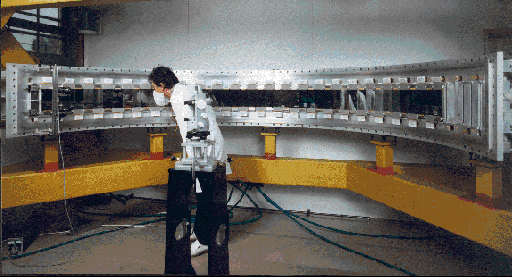 |
Detectors
III. Neutron Detectors |
 |
Detectors
III. Neutron Detectors |
Neutron Detectors
Neutron detectors are dealt with in more detail elsewhere on this course. In general neutron detectors are similar in concept to X-ray detectors but with a key change in activating material: for example He3 for an inert gas with gas detectors. The drive towards multiple systems (see last paragraph below) is also evident with neutron detectors. For example, in the next section, we show rapid neutron powder diffraction data collected on the D20 instrument of the ILL neutron source in Grenoble-France. This uses a system equivalent to the wire-micro-strip where many thin (500Å) metal wires (chromium or gold) are deposited on a glass strips within a He3 gas covering a lage angular range of 160° thus permitting data collection rates approaching those of X-ray angular-scanning systems. See below for an illustration and specification of such a PSD.

| Angular aperture | 160° |
| Radius of curvature | 1471 mm |
| Number of cells | 1600 |
| Angular definition | 0.1° |
| Length of detection zone | 4.1 m |
| Height of detection | 150 m |
| Gas filling | 3He (3.1 bars) + CF4 (0.8 bar) |
| Detection gap | 53 mm |
| Efficiency | 60% (0.8Å) - 90% (2.4Å) |
Most of the future trends of all the detection systems discussed involve miniaturisation and multiplication; we have already seen examples of this with the multi-wire ("RAPID") gas detector, the D20 micro-strip system and CCD with multiple electronic systems: the mood is to provide each sub-unit (e.g. every 1 mm or 100 μm) with its own read-out electronics, and these combinations are known as pixel detectors. There is little doubt that over the next two decades we will see orders of magnitude improvement in detector performance to take full advantage of the increases in X-ray/neutron flux that are already available.
|
© Copyright 1997-2006.
Birkbeck College, University of London.
|
Author(s):
Paul Barnes Martin Vickers Thomas Hansen |